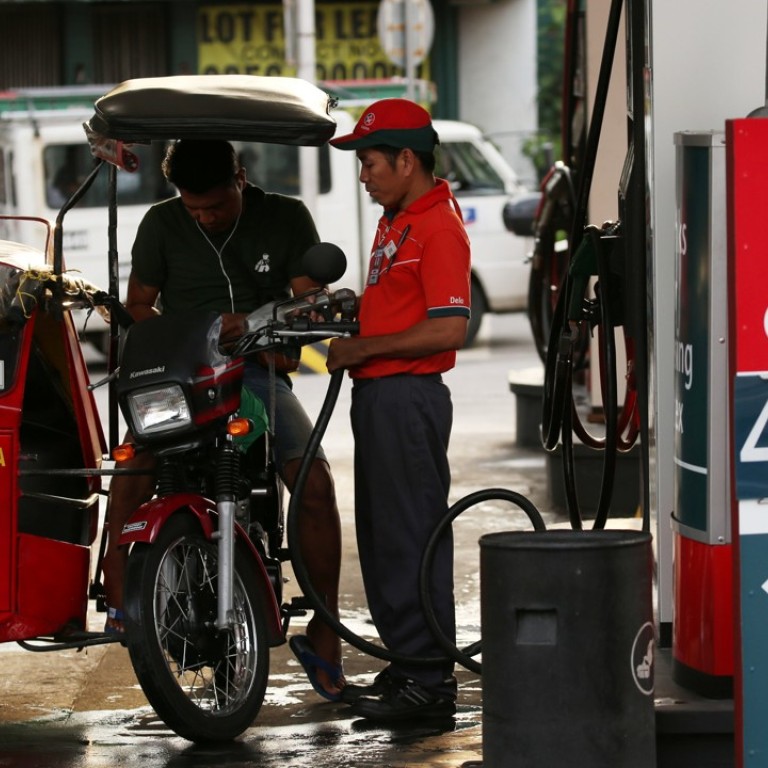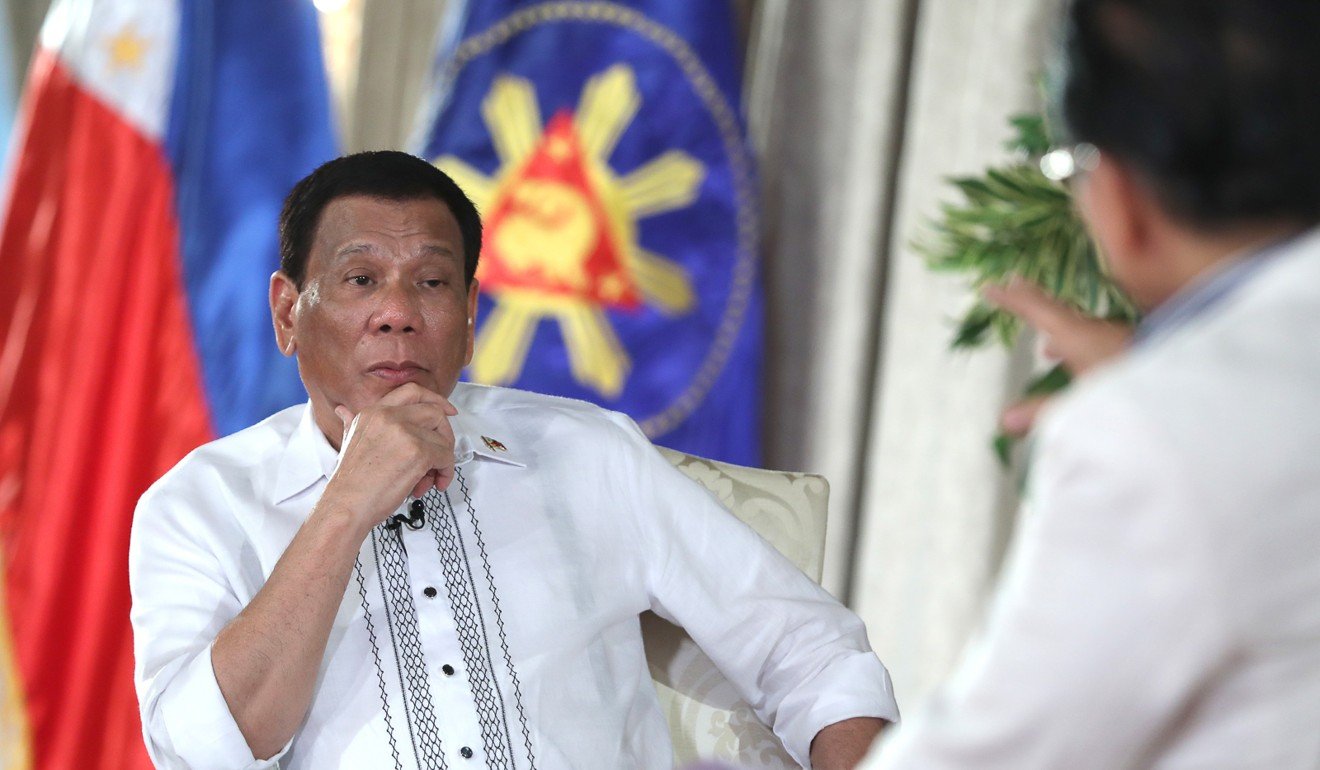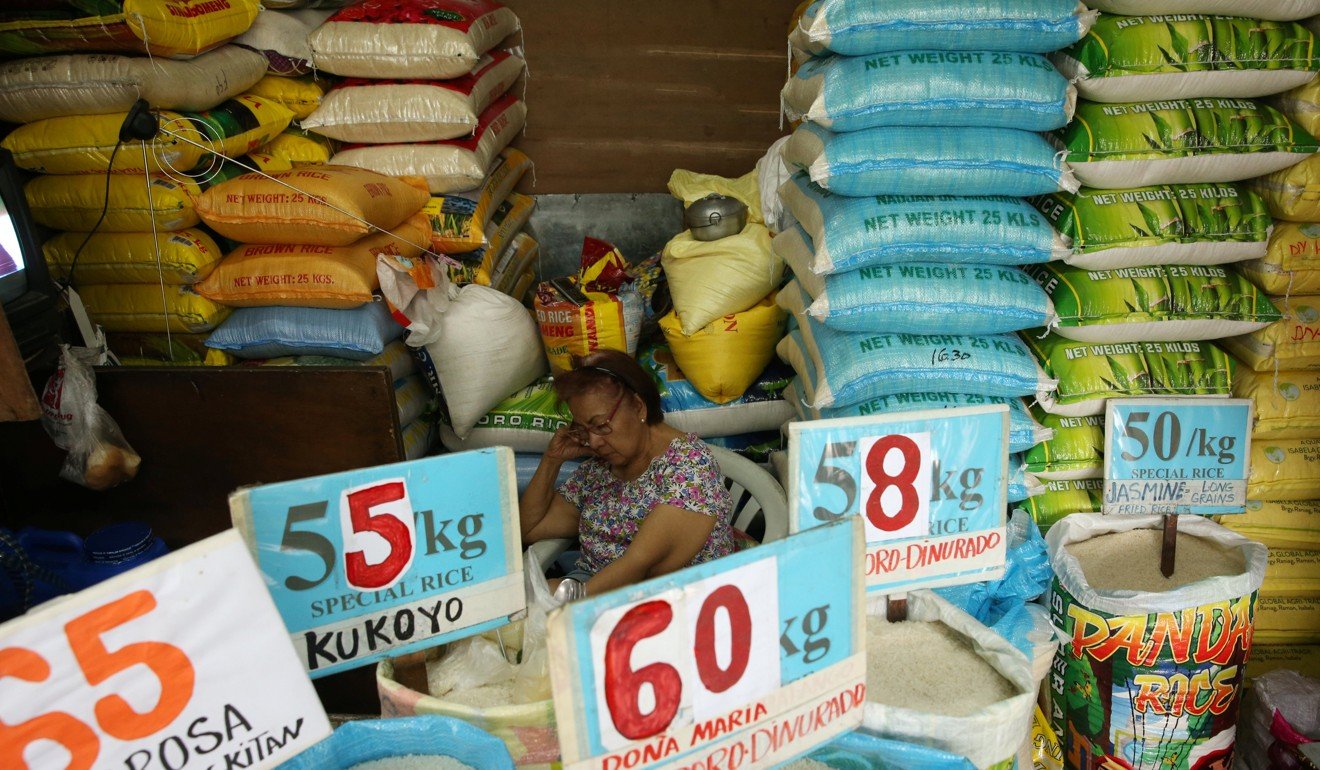
Philippines’ inflation crisis: will Duterte feel the pinch?
With the cost of everyday goods on the rise, Filipinos are tightening their belts and looking to their government for answers – while their president is intent on blaming Trump and the US
He has raised prices at the restaurants he runs by 5 per cent to 12 per cent, but if he goes any higher, his customers will not be coming back.
“There’s a [Peruvian] restaurant that I manage that uses a lot of cilantro. And even though we have secured our supply for this, prices have gone up so high that we needed to cut down usage of it,” said Him. “We have increased prices but we can only increase them so much. We are perpetually cost engineering our recipes to look for alternatives to lower the prices so we can maintain our competitiveness.”
How to catch a mutineer: the Philippine senator spooking Duterte
An inflation crisis is brewing in the Philippines, and Him is not alone in scratching his head about it.
This month, the Philippine Statistics Authority announced inflation for August hit 6.4 per cent year-on-year, the highest in nine years.
The average retail price of regular milled rice was 45.27 peso per kilogram in the first week of September, an increase of 19 per cent from a year ago.
“I’m not an economist and I won’t pretend to know how to fix this, but as a business person I’d like to see [officials] put much more effort into this instead of chasing personalities and critics of the government,” Him said.

The peso slumped to a 13-year low of 54.28 to the US dollar on September 17, bumping up the cost of imported food ingredients. Him has tried to replace these ingredients with cheaper local products, but some imported items must be kept to maintain the “integrity” of the dishes.
“Who started it? America!” Duterte said. “When America raised [tariff] rates and interest rates, everything went up.”
But his views differ from the central bank, which said inflation was partly the result of higher excise taxes imposed by the government that have driven up food, alcohol and tobacco prices.
A few things missing in flood-hit Manila. President Duterte is one of them
To rein it in, the Philippine government’s economic managers plan to submit a draft executive order to Duterte to simplify the process of food imports.
Duterte has ordered the arrest of Trillanes, after revoking an amnesty provided to the senator after his involvement in the failed 2003 and 2007 coup attempts against a former president, Gloria Arroyo.
But even if Duterte was right about a plot to oust him, the question is whether the public discontent caused by inflation is bad enough for that plot to work.

Maria Ela Atienza, the editor of the Philippine Political Science Journal, said she noticed correlations between high inflation and the approval rating of an administration in the country.
“However, this is usually in combination with other factors like rising unemployment, political scandals and/or turmoil, [or] lower trust in the national leadership,” she said.
Unemployment for July was 5.4 per cent in the Philippines. According the Social Weather Station, a local pollster, the net satisfaction in the Duterte administration in June was only 58 points – the percentage of satisfaction minus that of dissatisfaction, down from 66 points in September 2016.
“We still have to see the clearer impact of higher inflation, combined with allegations of [shortages of] rice and fish, rising gas and transport prices, and the fresh attempts of the administration to try to stifle opposition forces and float conspiracy theories, on the trust ratings of the president and performance ratings of the administration as a whole,” Atienza said.
Will Duterte’s sharia gift bring lasting peace to southern Philippines?
The Philippines has struggled with high inflation before. It reached a peak of 50.3 per cent in 1984, during the time of dictator Ferdinand Marcos; was at 19 per cent in 1991, partly fuelled by the Mount Pinatubo eruption; and was about 9 per cent in both 1998 and 2008.
Correspondingly, the net satisfaction rate for the Philippine government was only 1 point in 1991 under then-president Corazon Aquino; 36 points in 1998 under Joseph Estrada; and -1 point in 2008 under Gloria Arroyo.
Rogelio Alicor Panao, assistant professor of political science at the University of the Philippines Diliman, said that while the correlation between high inflation and dwindling approval ratings was apparent in advanced economies like the US, it was less certain in developing counties. “It is not inflation per se but its socioeconomic implications that cause public disquiet. Policies can be inflationary but the public will not mind if there are safety nets in place such as subsidies for rice farmers or regulatory interventions to arrest rising food prices,” he said.

Studies had shown Filipinos were more likely to reward political leaders with support if the government addressed their basic well-being, Panao added.
“Any effort to address inflation would be worthwhile. The more informed policy intervention, however, is one that addresses the socioeconomic implications of inflation. This distinction is important,” he said. “People widely believe, for example, that the inflation was brought about by government’s recent tax policies. That could be true and perhaps the tax reform’s short-term impact is indeed inflationary.”
What happened to the billions China pledged the Philippines? Not what you think
But focusing on tackling inflation might not be enough, Panao said. To boost its approval rating, the government should also ensure a stable supply of affordable basic commodities and help the average labourer get a modest salary, said the academic.
Manila resident Ruiz Eden complained that the price of tomatoes had gone from 140 pesos from 80 pesos a kilogram a year ago. “My immediate response to higher inflation is to be more prudent in spending. This means less consumption of beverages, which are more expensive now,” she said. “While imports may help lessen the shortage, the sustainable solution is prioritising and strengthening the agricultural sector.” ■

